
A Gallup study estimated that low engagement can cost about $8.9 trillion, or 9% of the global economy, highlighting the need for involvement and enthusiasm of employees in a workplace.
Talented employees must be paid more than the base income in order to be recruited, retained, and engaged. Beyond the base pay, the strategy needed to be more comprehensive, encompassing work-life balance, extra perks, and career advancement—all of which are components of a successful total rewards strategy.
So, it is important to understand the key components that are to be included in a Total Rewards Strategy and also how to create one and the benefits of implementing them.
A Total Rewards strategy is a holistic approach towards rewarding your employees. It combines all necessary elements of employee compensation, ranging from benefits, work-life balance, professional development, and more. The types of rewards under it can be both financial and non-financial rewards and it keenly contributes to employee satisfaction and elevated employee engagement.
The different types of compensation primarily include wages, base salary, monetary compensation, additional bonuses, and other cash incentives. This includes all the financial rewards that an employee receives from the employer. It can come as payments that are made more than just the base salary like bonuses, overtime payment and commissions and more.
Benefits programs as the name suggests adds to additional benefits apart from the base pay that is already being given to the employees. These benefits can range from leaves or time offs like sick leaves, paid time off and furthermore vacation days.
Additionally, wellness initiatives that guarantee a longer-term benefit to the worker's general security and well-being, such as retirement plans or disability insurance, are included in employee benefits.
Employers must be able to communicate that they value their workers' efforts in some way. Not only do workers need to feel noticed and validated, but they also need to be more productive.
Offering opportunities for employee development is what contributes as a very important part of the employee’s life. The total rewards package in its entirety must consist of such career development opportunities as well.
Total Rewards Strategy covers both monetary benefits and those that enhance overall employee satisfaction. Its primary focus is on accounting for the full value of all employee rewards.
Tuition Assistance and so on
Working flexibility through remote work, leave policies, and paid leaves. It is also observed that organizations that have an unlimited set of paid time off have shown high productivity. Such work-life balance initiatives are a great approach to rewards increasing employee job satisfaction and elevating employee performance as a result.
Flexible working hours
Paid time off
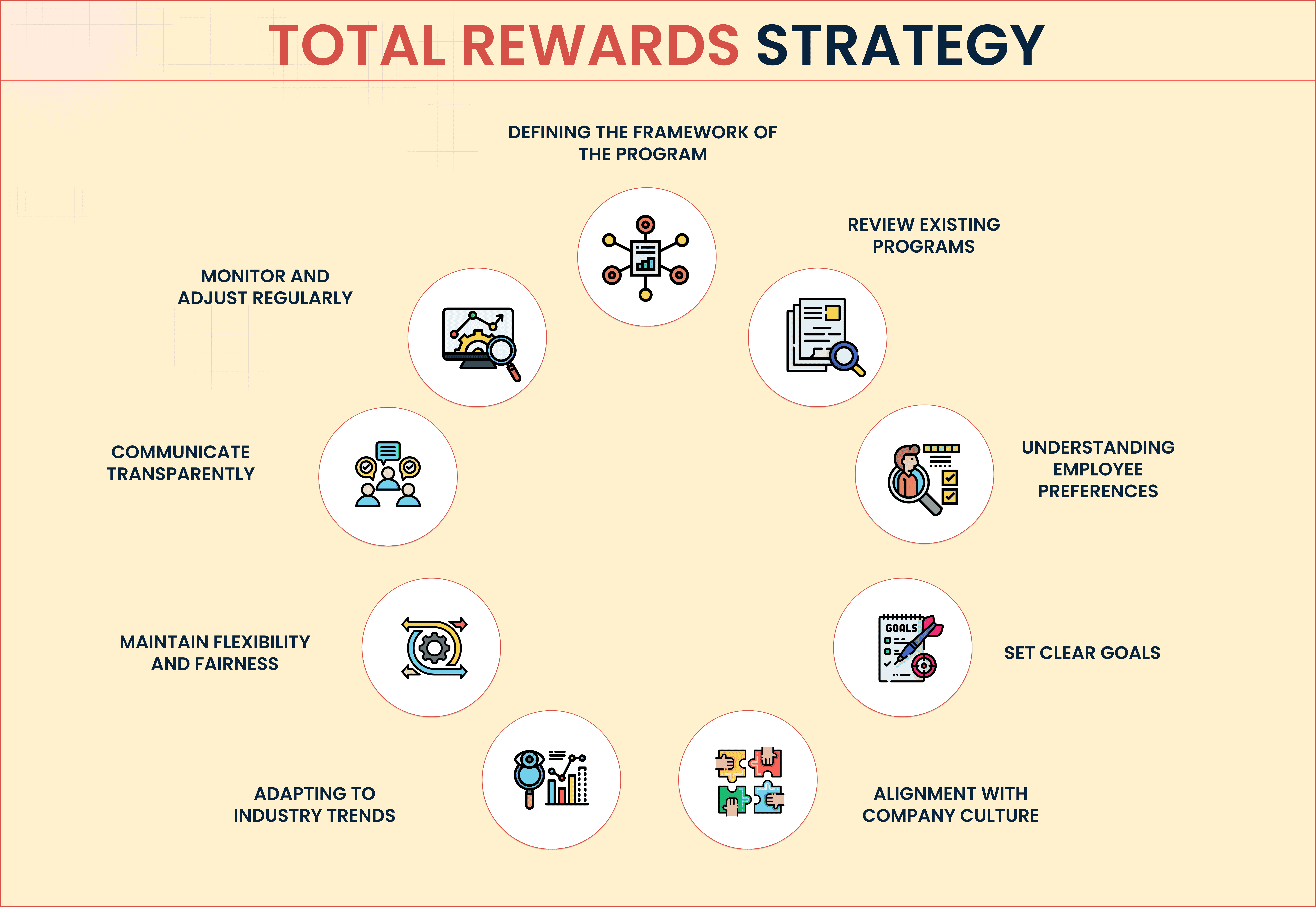
Creating an effective Total Rewards Strategy includes structure to the program and understanding the goals that address an employee’s needs and particular values.
Defining the framework of your Total Rewards program helps get a clearer idea of your program and adds more structure to it. This includes all the key components that are included in your Total Rewards program.
The existing programs can be reviewed to identify areas of improvement and strength in the total rewards strategy that is already in place.
Understanding Employee Preferences and meeting employee expectations is an important part of building an effective Total Rewards program. So actively engaging them and assessing their needs through surveys, employee feedback can help understand what they value more, salary hikes or additional benefits, or if they prefer a more flexible work environment.
The business goals and objectives are to attract skilled employees to your company or to retain existing employees or other initiatives; this must be questioned to set clear goals.
It is important to align the goals of the rewards strategy with the company’s goals and values as well as their overall vision and mission so that the goals are aligned.
Benchmarking the components you are offering to the industry standards is highly pivotal to having competitive compensation packages and attracting skilled employees to your company.
Ensuring that rewards strategies are maintaining a fair, balanced, and adaptable means of approach that is also flexible, encouraging employees to continue in the organization.
The rewards program and the components included in this program must be effectively communicated with the employees for them to have a clear idea of what is offered to them and encourage more transparency within the organization.
The market conditions regularly evolve, and so do the growing needs of the employee, so regularly reviewing the foundation of needs and the market trends to come up with competitive salaries and more, is a major need in creating an effective Total Rewards strategy.
It is important to understand why having a total rewards strategy is important and what their benefits are. So, the benefits of implementing a total reward strategy are:
Having an effective total rewards strategy makes employees in a company feel more valued and seen also increasing the employee morale. With the right monetary and non-monetary rewards, meeting the needs of the employees makes sure to keep them engaged and motivated.
A well-structured rewards system helps improve employee retention because employees tend to feel very satisfied when they are rewarded with a great compensation package for all, also elevating the overall employee experience and the work they put in for the organization’s overall success; this reduces the employee turnover rates.
A well-rounded and competitive total rewards strategy makes the organization simply more appealing to prospective employees with high competition for skilled employees.
A positive working environment with a comprehensive package in their business strategy encourages employees to be more productive and motivated. Recognition and other initiatives and rewards does promote a more flexible workspace and a culture of productivity within the employees enhancing the overall organizational Culture.
When employees have access to professional development opportunities and health benefits, they are better equipped to perform well, benefiting the company’s bottom line.
It is indeed a complicated process, building a well-structured and effective Total Rewards Package can get, so to have a tool that simply assists, simplifies, and helps with that process is an absolute boon.
The total rewards statement by CompUp has a holistic dashboard that breaks down information regarding compensation and benefits in the form of a cash breakdown.
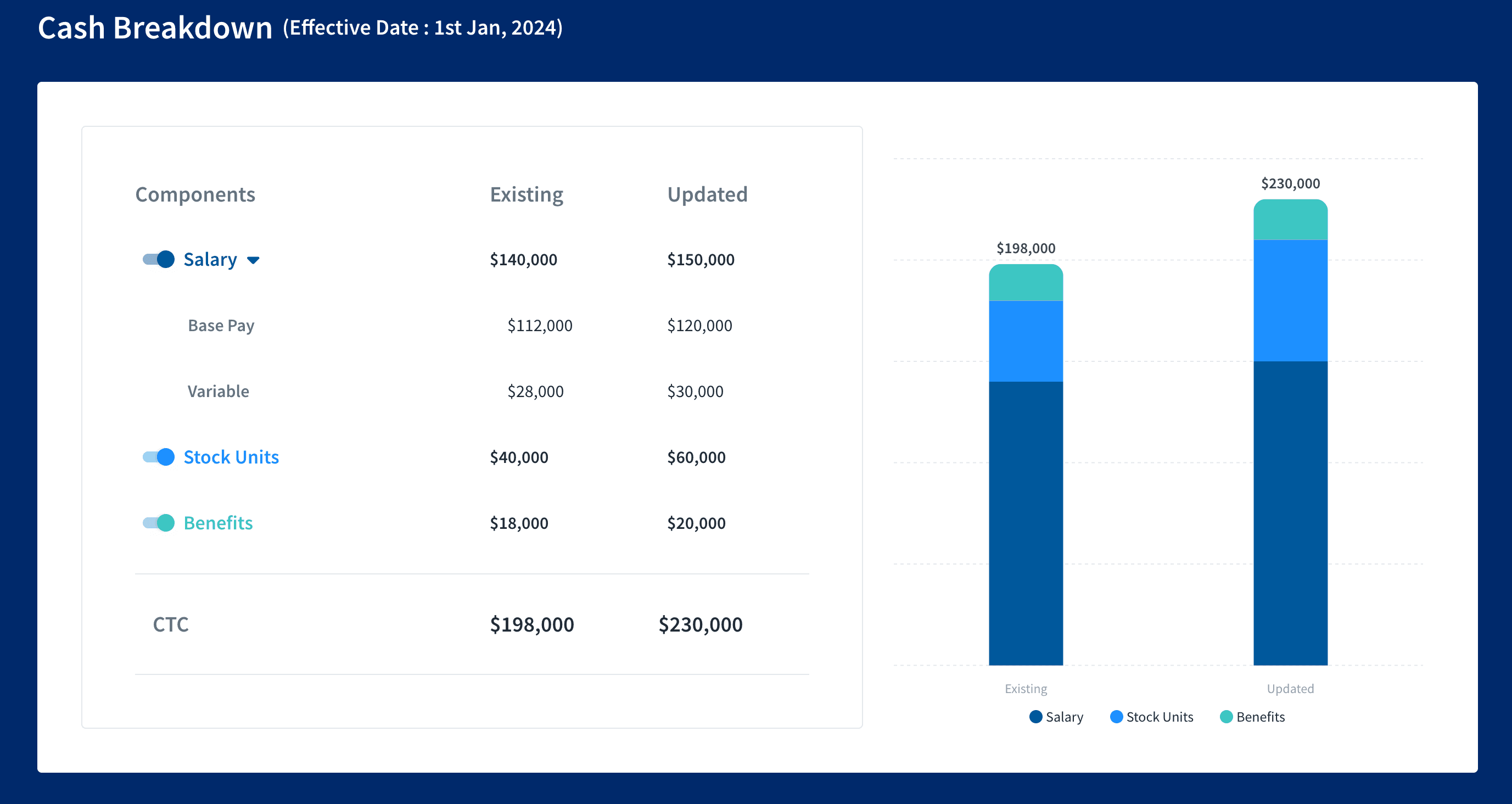
CompUp's total rewards statement also shows the overall growth of an employee’s income when in the organization, simply encouraging a more structured financial planning.
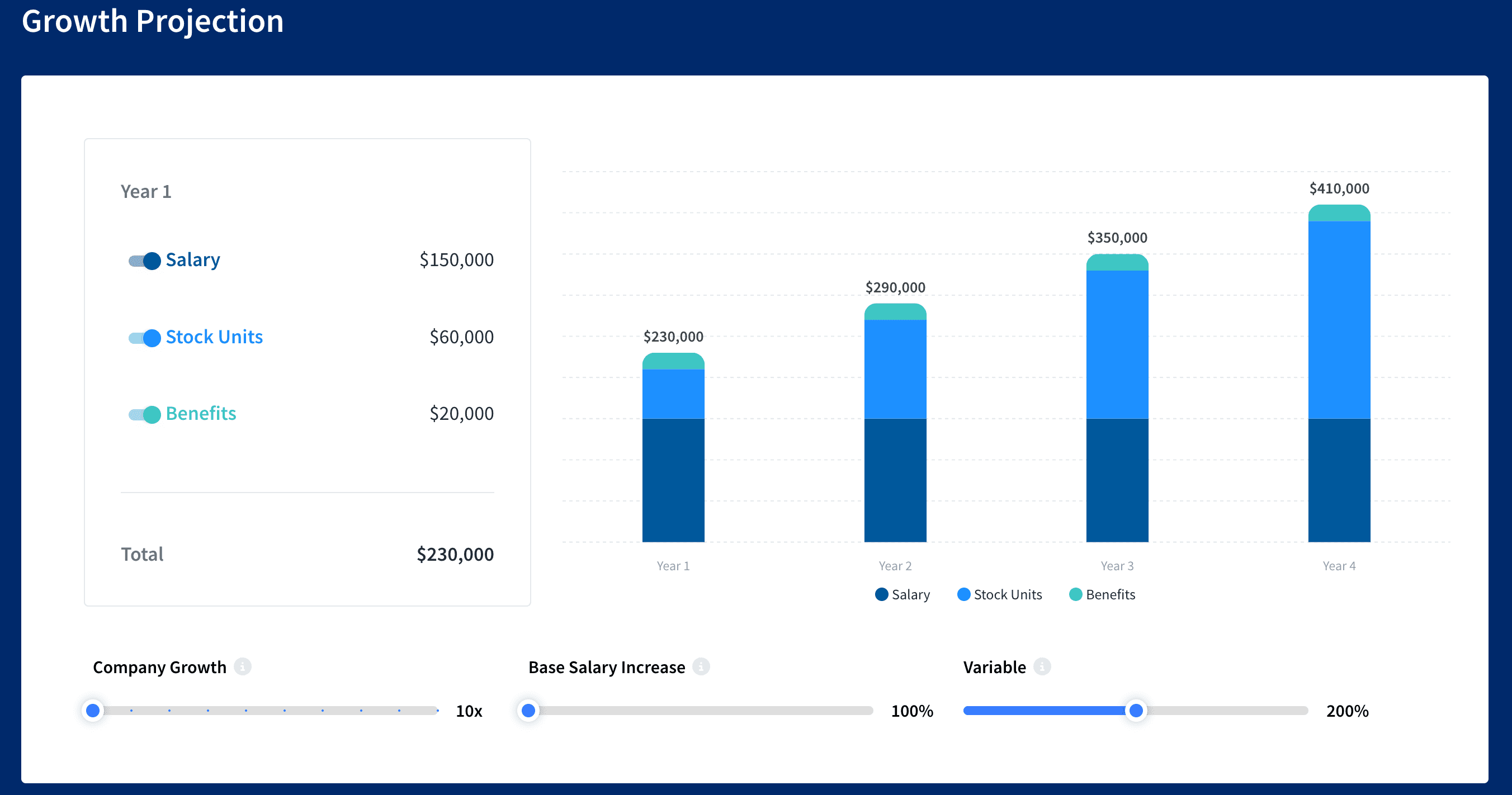
Additionally, CompUp has interactive lobby features, a separate component that tracks salary increases in the past so that users may compare it to their current compensation and general company growth.
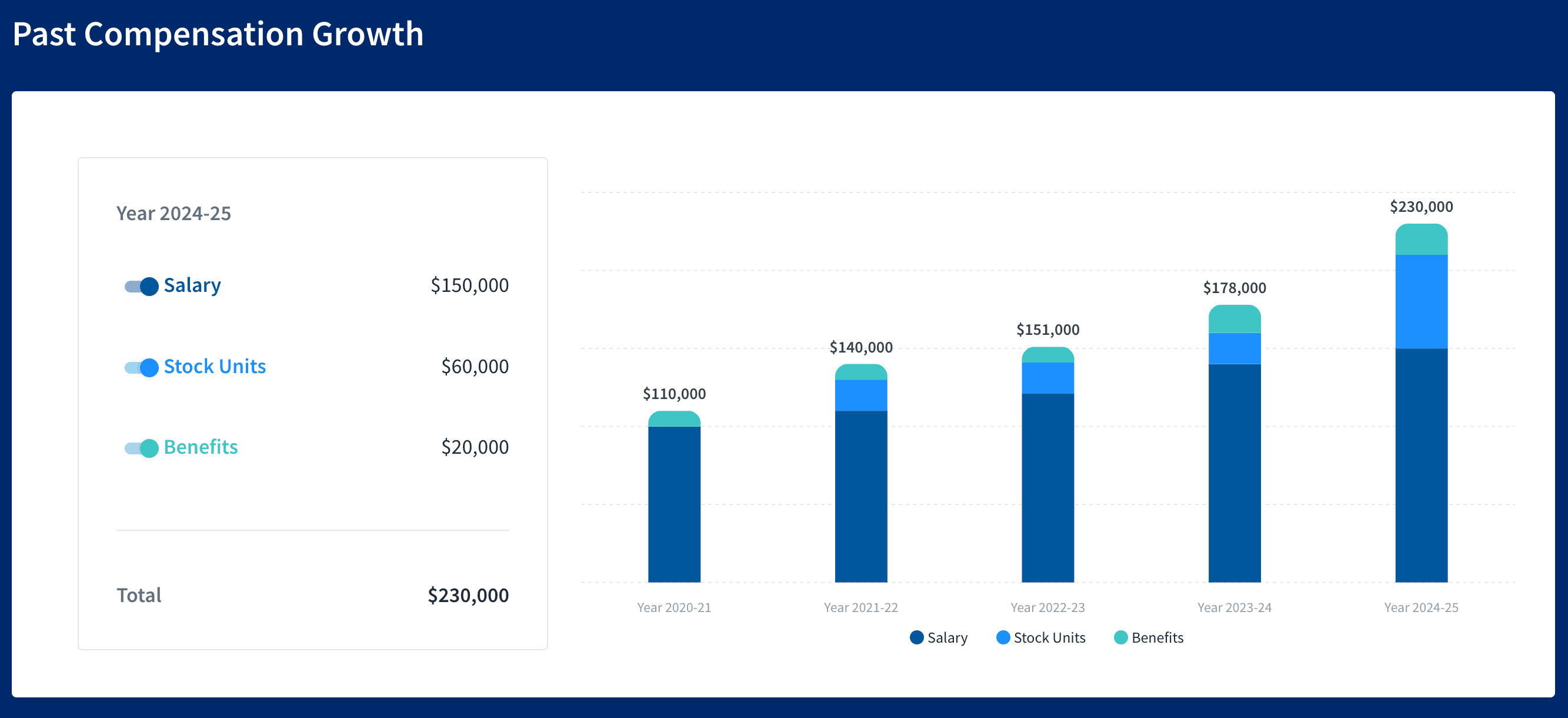
There is a particular section that also shows the benefits that are provided to the employees of the company.
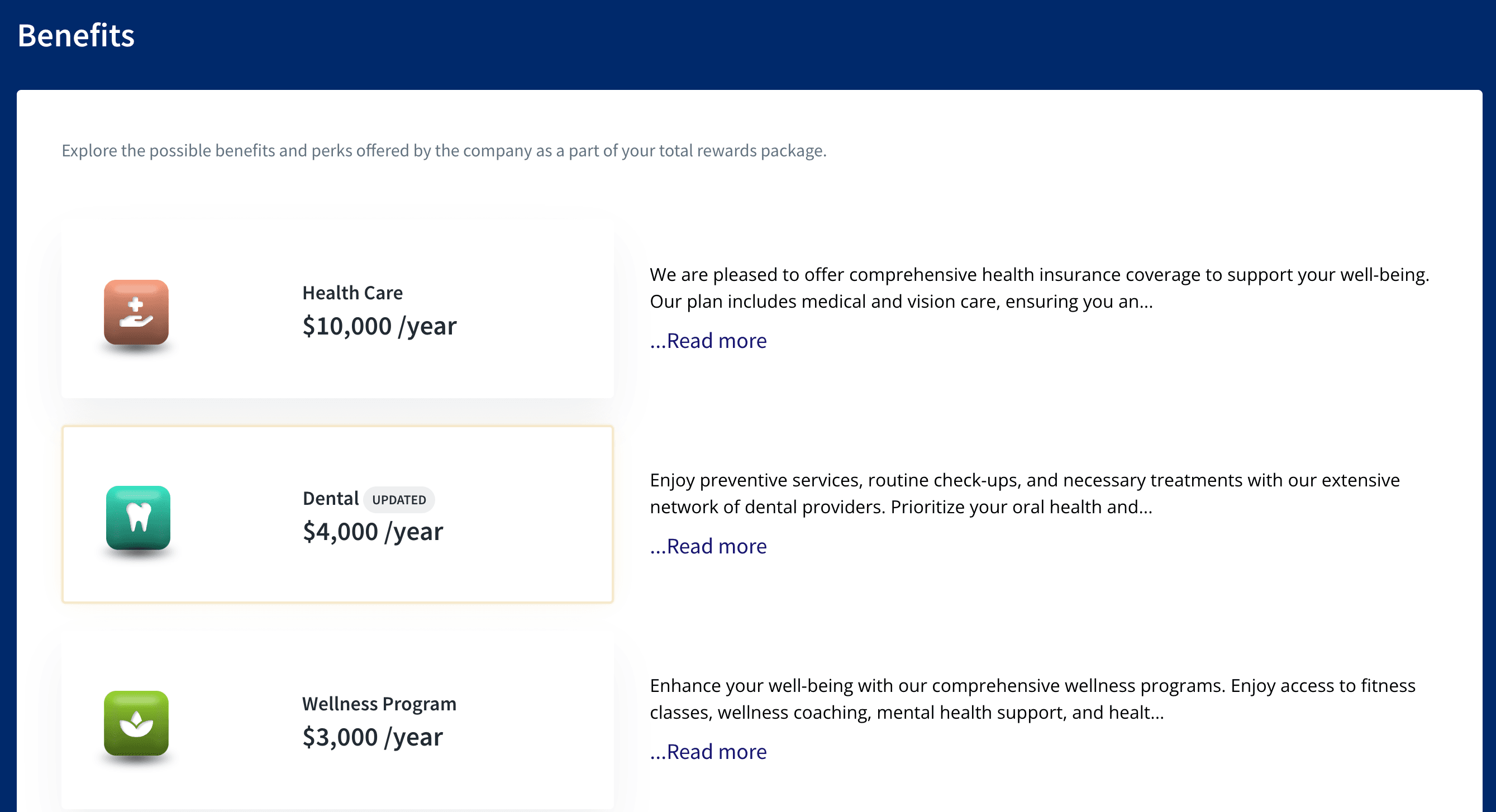
To attract and retain employees of a company, it is rather pivotal to have an effective total rewards strategy. Because a total rewards strategy includes everything ranging from benefits, compensation, recognition, flexible work hours, and more that aim to create a positive work environment. So, such a well-designed total rewards strategy is a keen need.
Try the platform here to create a greatly competitive total rewards package and make your life easier.
Revolutionizing Pay Strategies: Don't Miss Our Latest Blogs on Compensation Benchmarking